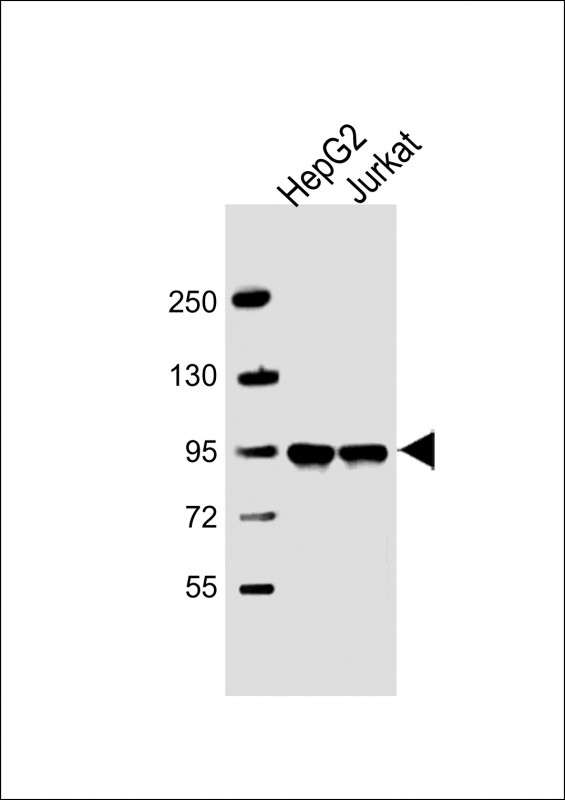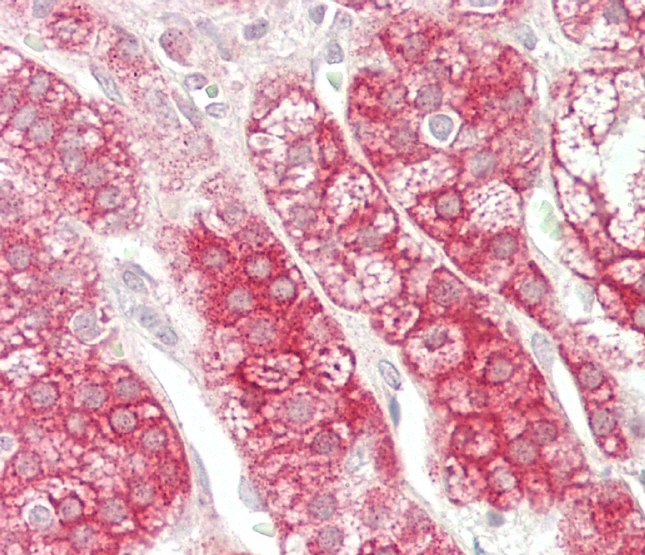

| WB | 1/2000 | Human,Mouse,Rat |
| IF | 咨询技术 | Human,Mouse,Rat |
| IHC | 1/100 | Human,Mouse,Rat |
| ICC | 技术咨询 | Human,Mouse,Rat |
| FCM | 咨询技术 | Human,Mouse,Rat |
| Elisa | 咨询技术 | Human,Mouse,Rat |
| Aliases | Liprin-beta-1, Protein tyrosine phosphatase receptor type f polypeptide-interacting protein-binding protein 1, PTPRF-interacting protein-binding protein 1, hSGT2, PPFIBP1, KIAA1230 |
| Entrez GeneID | 8496 |
| WB Predicted band size | 114.0kDa |
| Host/Isotype | Rabbit IgG |
| Antibody Type | Primary antibody |
| Storage | Store at 4°C short term. Aliquot and store at -20°C long term. Avoid freeze/thaw cycles. |
| Species Reactivity | Human |
| Immunogen | This PPFIBP1 antibody is generated from rabbits immunized with a KLH conjugated synthetic peptide between 588-617 amino acids from the Central region of human PPFIBP1. |
| Formulation | Purified antibody in PBS with 0.05% sodium azide. |
+ +
以下是关于PPFIBP1抗体的3篇参考文献及其简要摘要:
1. **文献名称**:PPFIBP1 promotes glioma metastasis by activating the MAPK signaling pathway
**作者**:Li X, Zhang Y, et al.
**摘要**:该研究利用PPFIBP1抗体通过免疫组化(IHC)和Western blot分析发现,PPFIBP1在胶质瘤中高表达,并通过激活MAPK信号通路促进肿瘤细胞侵袭和迁移,提示其作为治疗靶点的潜力。
2. **文献名称**:PPFIBP1 interacts with SRC to drive metastasis in non-small cell lung cancer
**作者**:Wang H, Chen L, et al.
**摘要**:研究通过免疫共沉淀(Co-IP)和免疫荧光技术(结合PPFIBP1抗体)揭示,PPFIBP1与SRC激酶相互作用,增强肺癌细胞的黏附斑形成和转移能力,临床样本分析显示其高表达与患者预后不良相关。
3. **文献名称**:Prognostic significance of PPFIBP1 in breast cancer and its role in angiogenesis regulation
**作者**:Kim S, Park JH, et al.
**摘要**:该研究使用PPFIBP1抗体进行组织芯片分析,发现PPFIBP1在乳腺癌中过表达且与血管生成标志物CD31相关,机制研究表明其通过调控VEGF分泌促进肿瘤血管生成,影响患者生存率。
(注:以上文献信息为示例性内容,实际文献需通过PubMed等数据库检索确认。)
The PPFIBP1 (PTPRF interacting protein, binding protein 1) antibody is a tool used to detect and study the PPFIBP1 protein, which belongs to the LAR protein-tyrosine phosphatase-interacting protein (liprin) family. PPFIBP1 is involved in regulating cell adhesion, motility, and intracellular signaling through its interaction with the LAR family of receptor-type tyrosine phosphatases. Structurally, it contains multiple protein-binding domains, including coiled-coil regions and LIM domains, enabling interactions with cytoskeletal components and signaling molecules like Src family kinases.
Research highlights PPFIBP1's role in cancer progression, particularly in tumor metastasis. Elevated PPFIBP1 expression correlates with invasive phenotypes in cancers such as lung adenocarcinoma and breast cancer, where it promotes cell migration and invasion by modulating focal adhesion dynamics and extracellular matrix remodeling. It has also been implicated in neurological processes, including synapse formation and axon guidance.
PPFIBP1 antibodies are essential for investigating its expression patterns, subcellular localization, and molecular mechanisms in disease models. They are widely used in techniques like Western blotting, immunohistochemistry, and immunofluorescence. Understanding PPFIBP1's functions may offer insights into therapeutic targeting for metastatic cancers or neurological disorders, though its precise regulatory pathways remain under active exploration.
×